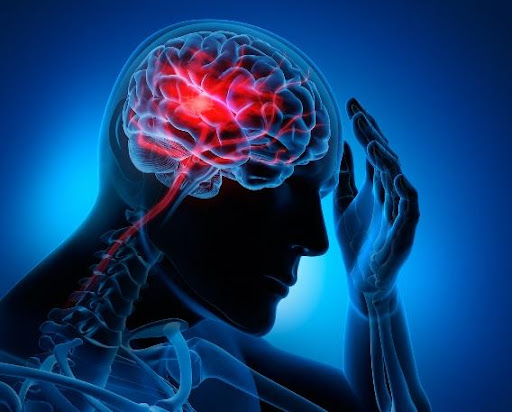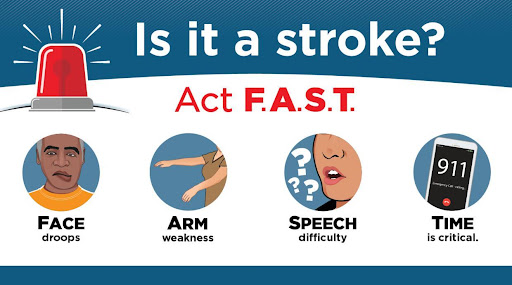Being constantly worried about the negative effects of pandemics, the consequences of devastating viruses, we are overshadowing some health issues that affect humanity no less. We are not afraid of them because they are not as visible, because they are not talked about so much, or simply because we believe that they are not necessarily our problem. Do you wonder what health issues I'm referring to? There are certainly more, but in this email I would like to refer to the stroke.

According to data provided by the World Health Organization, 15 million people worldwide suffer a stroke each year. Of these, 5 million people die, and another 5 million remain disabled.
Isn't this also a kind of “pandemic”? But it doesn't instill as much fear in us and doesn't make us more aware, although it should…
What if we could save someone, or even our own life, simply by being more informed and attentive to the reactions of the body?
The longer I work as a doctor, the more I become convinced that no disease develops so easily. The body gives us signs: an increase in blood pressure, pain, spasms. What are we doing? Most often we take painkillers. And then we are surprised that the disease came suddenly …
A stroke is a bleeding in the brain. And this does not happen by chance, because somewhere there is a defect in the vessel, its thinning, protrusion, aneurysm.
There are two main causes that can lead to acute cerebrovascular accidents. The first is a sudden blockage of the lumen of the vessel that feeds this part of the brain. The “culprits” can be a blood clot, atherosclerotic plaque, severe spasm, etc. This type of stroke is called ischemic. Somewhat less often, another type of stroke occurs – hemorrhagic, when spontaneous bleeding into the brain occurs due to a rupture of the vessel wall.
Already from the description of the causes of a stroke, it is clear that this is not an independent disease, but always a complication of some underlying human disease.
For the prevention of stroke and its recurrence, it is necessary to promptly treat the underlying diseases, the complication of which is most often a stroke – vascular atherosclerosis and arterial hypertension. It is also important to avoid severe stress, quit smoking and alcohol, move more and, of course, visit your doctor regularly. It has been observed that stroke is less likely to occur in those who have a normal amount of vitamin C in the diet. This vitamin protects the arteries, lowers blood pressure, as well as the amount of cholesterol in the blood. Therefore, if you regularly drink juice rich in vitamin C, even in small doses, you can reduce the risk of stroke.
But let's go back to what I told you before. It is extremely important to be able to listen to your body and not ignore the signals it gives you.
If at least two of the following symptoms recur once a week or more often in the last three months, then an immediate visit to a doctor is required:
- Headache that does not have a specific localization and occurs with overwork or weather disasters.
- Vertigo at rest and aggravated by movement.
- The presence of tinnitus, both permanent and transient.
- “Dips” of memory for the events of the current period of time.
- Changes in the intensity of working capacity and sleep disturbances.
A stroke is a medical emergency where time is of the essence. Earned minutes save lives. Therefore, it is very useful to know what important signs indicate a stroke in order to call for help as soon as possible.
To recognize a possible stroke, use the FAST algorithm – Face, Arm, Speech, Time.

- Face – facial weakness, the victim has a strange smile, mouth or eyes may be downcast;
- Arm – weakness of the arm, the victim can only raise one hand;
- Speech – problems with speech, the victim cannot speak clearly or does not understand what is being said to him;
- Time: Time to call an ambulance!
If the patient is unable to perform one of these actions, he may have suffered a stroke. Do not underestimate the situation, even if the patient denies that he is feeling unwell, he urgently needs help.
What do you have to do?
Ask the victim to laugh or show the teeth. Look carefully if the mouth is crooked or one of the corners of the mouth is lower than the other.
Ask the patient to close the eyes, raise both arms horizontally at the same time, and turn the palms up. Check if one of the arms falls or is not firm.
Ask the victim to repeat a simple sentence. Check that he is speaking clearly or stammering.
Steps you should follow:
1. Call the rescue urgently if you are alone or ask someone to help you.
2. Help the patient to rest and do not allow him to make an effort. Place it in a comfortable position (for example, in a sitting or semi-sitting position).
3. Periodically check that the patient is conscious and breathing normally.
4. Do not give fluids or tablets to the victim, as they may choke.
It is important that first aid is provided from the very beginning of the onset of the disease. This will help prevent the development of irreversible processes in the brain and prevent death. Doctors say the first three hours are critical to saving the patient. If the first aid was given correctly, there is a chance that the body will return to normal functions.
Prevention of cerebral stroke is not just a recreational measure to improve the overall level of health, but is part of a comprehensive treatment and prevention of a serious disease that has claimed many lives, regardless of age and lifestyle. If you have symptoms or consider yourself at risk of developing such an ailment, you should visit a doctor. Even the initial symptoms of a migraine can be a wake-up call.
Despite all the advancement of modern medicine in the case of a stroke, it is the prevention and early warning of the disease that gives really high chances of avoiding a stroke and saving your health, and possibly life.
